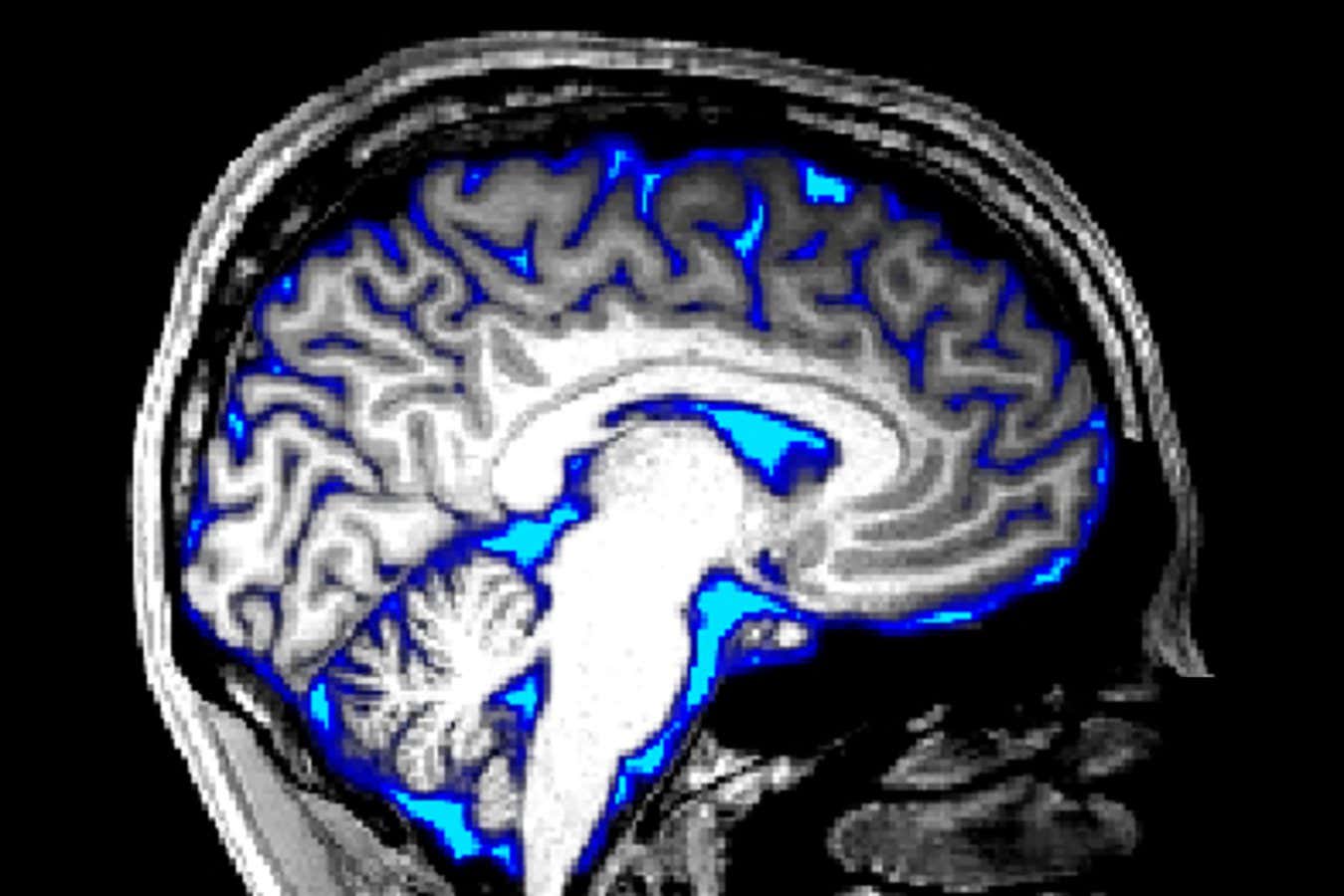A fluid-filled network that clears waste products from the brain may be important in neurological conditions, but we know little about how it works
By Clare Wilson
30 March 2023
A magnetic resonance imaging scan of an adult brain, with regions of cerebrospinal fluid overlaid in blue
Stephanie D. Williams (CC-BY 4.0)
The brain’s “waste disposal system” may kick in after intense neural activity – and it might be possible to turn on the process intentionally.
Until recently, this system was thought to activate only during sleep, but now researchers have seen it ramping up in people after they watch flickering chequerboard patterns on a screen.
The finding provides a tantalising hint that people may be able to deliberately flush out waste products from their brain by staring at intense visual stimuli, says Laura Lewis at Boston University in Massachusetts.
Advertisement
“The real surprise was that they found it in awake people,” says Edoardo Rosario de Natale at the University of Exeter in the UK, who wasn’t involved in the work.
The brain’s waste disposal system involves cerebrospinal fluid (CSF) being pumped into the brain and leaving through a network of fine tubes called the glymphatic system, which was only discovered in 2012.
Animal research suggests the fluid flushes out waste products made by brain cells, including harmful compounds that may be involved in Alzheimer’s disease and Parkinson’s disease, such as beta-amyloid and alpha-synuclein.
